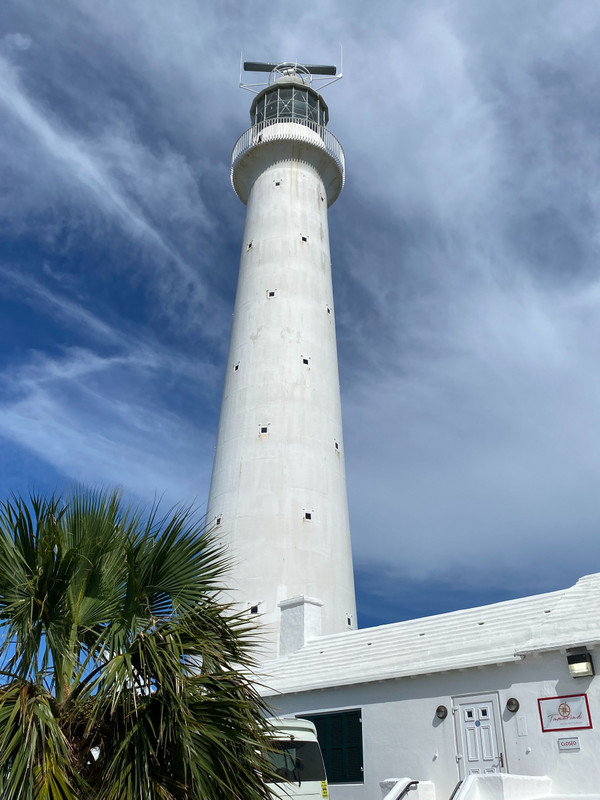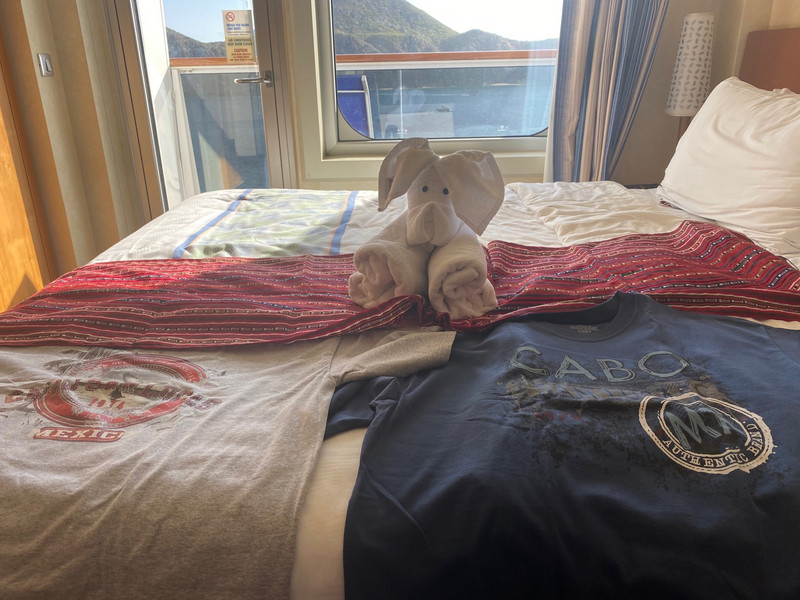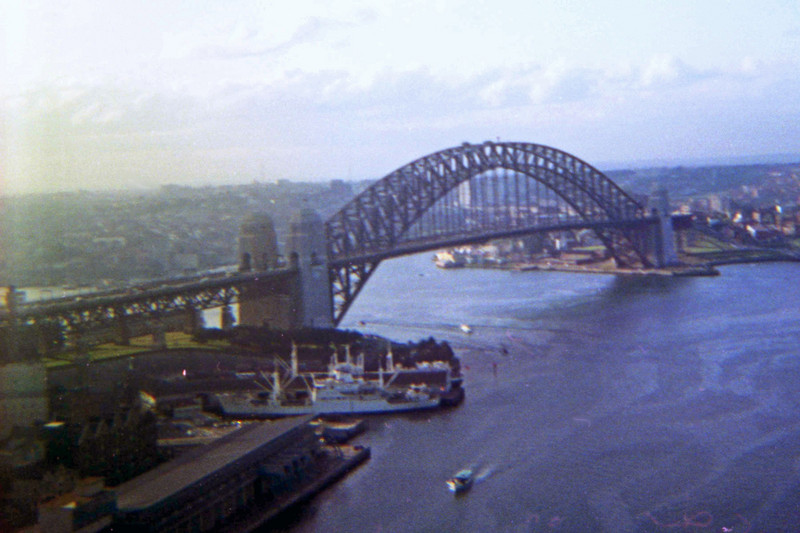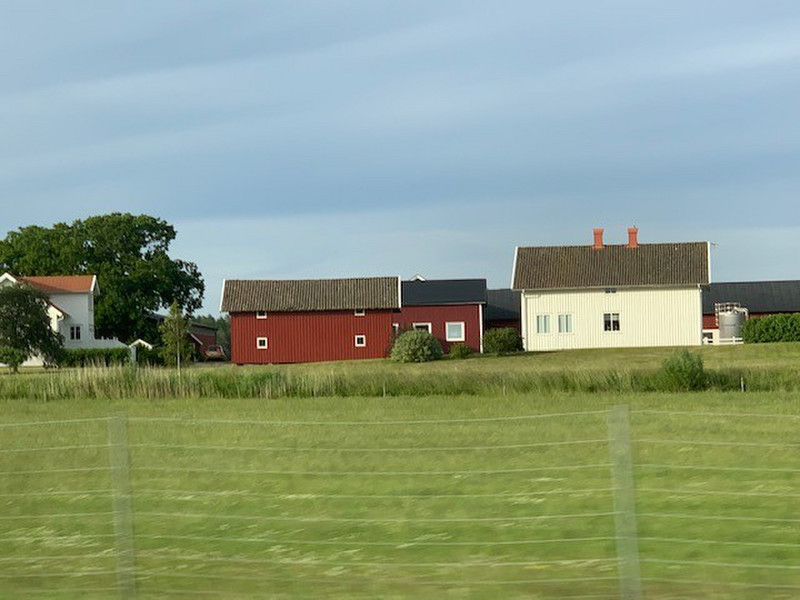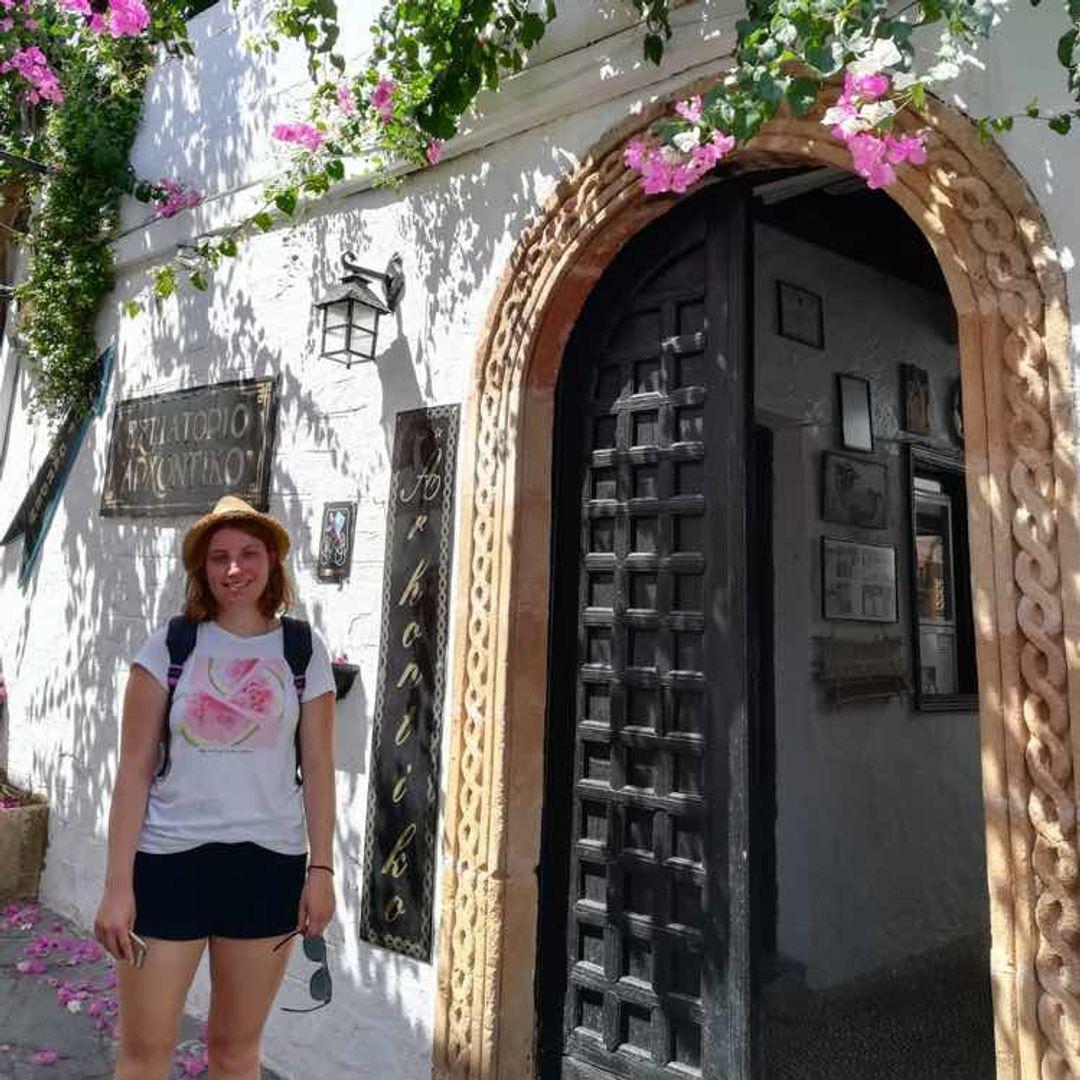Gibbs Hill Lighthouse. Cast iron lighthouse built in1 1844. the lighthouse tower is 118 feet (36 m), though its location on the hill enables its light to be at 354 feet (108 m) above sea level. IMG_7299
Carnival Legend docked at Kings Wharf at the Royal Naval Dockyard early on Wednesday morning. Susan and watched the docking while having breakfast on the Lido Deck. A beautiful sunny morning. The ship was cleared at 8:15 a.m. and passengers began making the way to the gangway on A Deck. Most I would say were heading for the beaches along Bermudas south shore.
Our shore excursion was Carnivals Best of Bermuda scheduled at 9:30. It would be a five hour overview of Bermuda‘s attractions and a brief look at St, George and Hamilton. An advantage to this tour was that it was all by bus. (In 2010 we took ferries to St. George and Hamilton.) We saw sights not visited in 2010. The drive out of the Dockyard led through of Somerset Village, by Fort Scaur and over Somerset Bridge, the worlds smallest drawbridge.
A stop was made at Gibbs Hill Lighthouse on the southern shore. Gibbs Hill is a cast iron lighthouse built in 1844. We then had a tour of Bermudas famous south shore beaches: Church Bay (said to be the best for snorkeling); Horseshoe Bay; Angle Beach and Warwick Long Bay. The tour
turned inland, passing many quaint and colorful churches along the way. The driver said Bermuda has the greatest number of churches per capita. Bermuda is a chain of islands that are connected by any number of bridges. The remains of several bridges of the former Bermuda Railway can be seen along the route. (The railway was brief, lasting from 1931 to 1948.) Many railway bridges have been converted into footpath bridges along the Bermuda Rail Trail. Private automobiles had not been permitted in Bermuda until 1946, the driver said. Before then the principal means of transportation had been bicycles or carriages and wagons.
A long highway bridge is The Causeway, connecting the main island with St. Davids island and the airport. A drive around Fort St. Catherines brought us to St. George, at the easternmost point of Bermuda. The tour had a 30 minute stop here. There was little change in St. George from 2010, except the Town Hall was now painted red and Somers Wharf was now painted lime green. There was time only for a quick look around the shops at Somers Wharf before heading back to the bus. Fortunately, we had spent a day at
St. George in 2010. After passing Government House, residence and office of the Governor of Bermuda, another 30 minute stop was made on Front Street in downtown Hamilton. Susan had time to find a Bermuda Longtail charm she sought. From Hamilton, it was back along the southern beaches and then back to Heritage Wharf. The tour provided a good overview of all of Bermuda and would certainly leave wanting to see more. (I would 45 minute stops rather than 30 minute.) I was glad I had seen St. George and Hamilton on foot on our previous cruise here.
I watched for unusual birds on the tour of the islands, hoping to see a Longtail. Alas, I did not. I did see a Great Kiskadee with its yellow breast. Otherwise, birds observed were types seen at home: European Starling; House Sparrow and Pigeon.
The thing I find most interesting about Bermuda is how quickly it developed. It was settled in 1609 via the wreck of Sea Venture that was intended to resupply Jamestown, Virginia. Many of the new Jamestown colonists remained in Bermuda and St. George was established by 1612. By 1624 the existing parishes had
been established and the still standing State House (1620) and many forts and redoubts were there. In contrast, nothing of 1624 Jamestown, Virginia, and its surrounding settlements exists today except as archaeological digs.
Returning to the Dockyard at 2:30 p.m., Susan and I were ready for lunch. I had wanted to revisit the Frog & Onion Pub for a serving of Bangers & Mash. But, it was hot after a long day on the bus and so we reboarded the ship.
